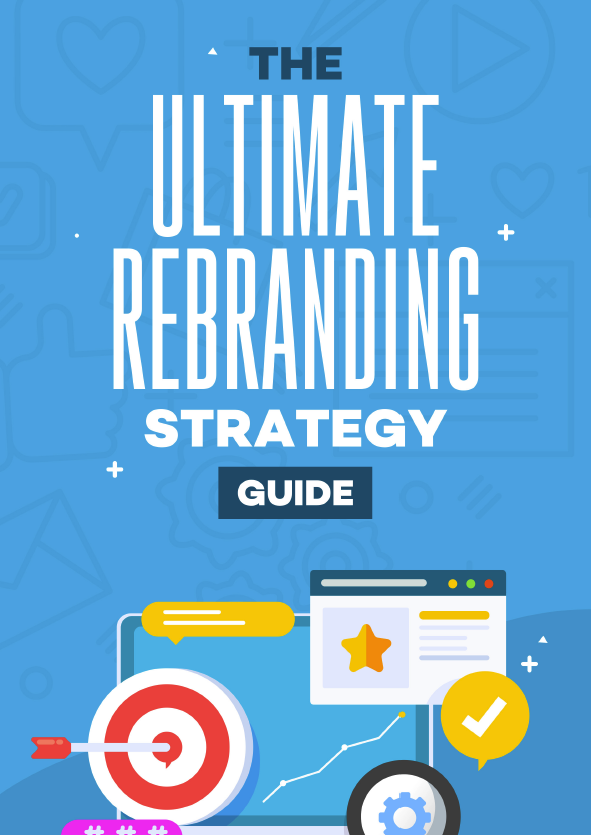In a perfect world, your business would sell itself without content creation.
But, unfortunately, whether you’re selling a service, a product, or your expertise … marketing is inevitable.

People can’t know who you are unless you tell them. The only way to attract people to your business is to put it out there for the world to see.
But “out there” is a pretty big place on the internet. You can’t just go, hi, I’m Steve. Here’s my brand. Please partake.
Digital marketing can feel like shouting into the void. Shout enough with no return, and you’ll never see your brand fully realized.
But, you have the ideas. You have the product. You know the value. How do you share it so others can know it too?
Enter the world of CONTENT CREATION *cue confetti* 🎉
Content creation in marketing can be confusing in the beginning. But, it doesn’t have to be hard when you understand which content strategies and ideas to build off of and share with your audience. A firm grasp on content creation can help you grow and establish your business.
The ultimate goal of content is to attract an audience and convert them into customers.
Creating content in marketing invites people into your business. You’re providing useful and valuable information that is relevant to what you’re selling. Your offer of value proves your credibility.
When your content contains information that people are actively seeking out, it’s like you’re rewarding them for finding you.
Content advertises your business. Even if it isn’t verbatim saying, BUY MY PRODUCT — the implication of your product’s worth is inherent. By simply providing some helpful tips for free, you’re saying something about your brand that makes it more attractive to potential buyers.
When you give something to someone who isn’t a customer, you give them a narrative about you that will ideally turn them into one. “Oh they’re so helpful!” or “Wow, this is great…their paid product must be AMAZING!”
And as this helpfulness continues to be the case with your content that people can rely on over and over – you’ll develop Customer Loyalty.
Consistency is king when it comes to producing a loyal base.
Consistent content gives your audience something to interact with on a regular basis. It reminds them that you’re there. Out of sight out of mind isn’t just an idiom. It doesn’t matter how amazing your offer is if no one knows about it.
If someone has to go digging through the bowels of the internet to find your website, they’re probably never going to get to it. (I mean, how often do you look past page 1 of Google?) By being visible through content you inspire potential buyers to think of you when they need the service or product you provide.
So, how do you make your business easier to find?
Content Marketing! *more confetti* 🎉
Content Creation vs Content Marketing
Content is what you create, content marketing is what you do with it. Content marketing is all about strategy. You can have the most useful information, but if you aren’t presenting it well, it won’t get the attention you need to drive sales.
Let’s talk about SEO.
And, of course, we need to talk about it because it’s the key to a successful marketing content creation process.
If you haven’t heard the term SEO before, you’re going to hear it a lot as you develop digital marketing strategies. SEO stands for Search Engine Optimization. It basically means how easy it is to find your website when someone is looking for your product or things related to your product.
Search engines are optimizing the experience of their users by providing the most USEFUL and RELEVANT results when someone is searching. The way search engines do this is by looking for keywords within your content that best relates to what people are typing into their searches. The more your content reflects what people are looking for, the more likely search engines are going to move your content to the top of their search results.
You want it to be easy for people on the internet to find you, and they should be rewarded when they do by finding what they need. In order for search engines (and potential clients) to discover if your website is the best option, your content needs to speak for itself!
Important note: you can’t cheat Google bots by spamming your sites with keywords that you think people might use in their searches related to your brand. Google recognizes spam and hides it. But you would never do that anyway of course. You want to provide things that are actually beneficial to your potential clientele.
The Forms of Content Creation in Digital Marketing: Which is Best for You?

There are several types of content. Figuring out which one will work best for your digital marketing depends on what you’re trying to achieve with your content creation. Consider what will be most useful and interesting to the people you want to find your brand or business.
1. Blogs
Blogs are some of the most popular content marketing avenues. They’re longer form which provides plenty of space for relevant content to match what your audience is typing into search engines. (Though, as mentioned above, Google will not reward stuffing your site with keywords meaninglessly.)
Regardless of the type of business you’re running, a blog can be adapted to your needs. Blogs that are meant to entertain can attract attention just as well as blogs that are more informational. The point is to make sure the content within these blogs is something your target audience would want to read.
Some blogs are made to be very time specific. Others contain content that is more evergreen – meaning the information will remain useful long after it’s first published.
For example, if you go to your search engine of choice and type in “best sneakers for running” you’ll find Listicle blogs like “The Top Ten Sneakers for Runners This Year” or Guide blogs like “What Runners Should Look For When You’re Shopping For Sneakers.” The former is very dependent upon context that will eventually become outdated. The latter is information that remains valuable over time—continuing to be something you can draw from whenever you buy sneakers regardless of the year.
Note: Evergreen content should still be updated regularly so that google analytics will see the blog itself as timeless as the information.
2. Email/newsletter
Email marketing is a great form of content creation to stay in touch with your audience and get traffic to your website on a regular basis. Emails are the easiest way to touch base with your potential clientele frequently. They’re short-form, easily consumable content going straight to your customers’ inboxes.
Creating content for emails is often very similar to blogs, just in a compact format. In fact, your email newsletter can just be a preview with a link to a blog or other content on your website or social media pages. Regardless, getting people to interact with links to your content is a good thing. The more traffic your website gets, the more Google and other search engines recognize its authority.
Email marketing is a fantastic choice for reminding people you exist. Just be careful not to become spam. Giving a nod and wave to your customers regularly is more well-received than smacking them in the face.
3. Infographic
Infographics are visual representations of data (they’re info…on a graphic.)
Successful infographics are appealing to look at while communicating compelling information. They can be a small image, like a pie chart, or a longer image with several different sorts of graphs and charts that clearly share data and information.
The benefit of infographics is that they are easy to understand and easy to share. Because they can be consumed so quickly and are visually appealing, they have the capacity to go viral on social media. The mass appeal of infographics makes it properly suited for attracting people who are less informed about content related to your business.
4. Video/YouTube
Video is another form of content creation in marketing that’s easily consumable. It requires much less investment of time for your audience to watch a short video than to read a long blog post. This lends itself to being more suited for your average consumer as opposed to someone who is highly invested in learning more about your content.
If you are inexperienced with video, you may think its effectiveness is based on the expense of production. But basic equipment utilized effectively can yield great results! Many people creating viral content on platforms like YouTube and TikTok are filming with their iPhones. And with the advances in technology making perfectly decent equipment less expensive, it’s now easier (and cheaper) than ever to make videos that look good.
5. Webinar
Webinars are online video seminars that allow viewers to participate from all over the world. They are typically focused on a single topic of information. This can mean a presentation or demonstration of a service or product. Or it can be solely a Q&A. (A favorite because the bulk of the work is on the audience.)
Unlike most pre-recorded videos, webinars are an opportunity for your audience to engage with you. It allows live conversations where people can ask questions.
This interactive content experience is more personal for your audience and gives them a sense of participation. This is a great option for brands whose goals are to educate or entertain.
6. Podcasts
Podcasts are for people who want to make videos but have a face for radio.
Ok, that’s a joke.
Podcasts are similar to videos in terms of their ease of consumption. They also don’t require the same investment of attention as marketing content that has to be read even if it is the exact same copy.
It’s content creation that’s more personal. You can laugh on a podcast, share your personality, and endear people to you in a much simpler way than written form content.
And similarly to video, you may assume high-quality equipment = expensive equipment for podcasting. And as with video equipment, advances in audio equipment have made microphones and headsets that will suit your needs and are more affordable.
But unlike videos, podcasts can join your audience on their daily commute. On their walks. During their workouts. Podcasts have become very commonplace, and some people make their entire business just from podcast creation.
These are just a few of the types of content you can be developing to create a content marketing strategy. What you choose should be based on your business, your audience, and the purpose of what you’re creating.
Creating A Content Marketing Strategy

Developing a strategy is all about getting your content in the right hands at the right time.
The What. The How. The When.
WHAT is your content?
HOW are you going to present it?
WHEN are you going to share it?
The answer to all these questions will be determined by your strategy.
Set Goals
Before you can start your content creation digital marketing strategy, it’s best to determine what you’re trying to accomplish.
Maximizing your content doesn’t mean producing as much content as possible — it means using content to achieve your goals in the most effective way possible.
Clearly defining your goals is the best place to start. You have an overarching goal for your brand — it’s the reason you created it in the first place. All your goals within your content marketing strategy help support that main goal.
Some examples include:
- Increasing Brand Awareness
- Improving SEO
- Driving Website Traffic
- Increasing Conversion
Once you know your goals, you can make sure you’re effectively working towards them at every step. Keeping your purpose at the forefront of your mind makes it easier to know what content to keep and what needs revision.
Know your audience
Once you know what you’re trying to achieve with your content, the next step is determining who it’s for.
Understanding your audience is essential to executing your digital marketing strategy. Finding things like age, gender, income — all the factors that can tell you the trends and behaviors of the people you are MOST likely to sell to — can help you cater your content so that it will best achieve your goals.
Gathering data is a way to understand your current audience. Social media websites have analytic tools that can show you the demographics of who is interacting with your posts. You can see who is interacting with your content the most so you can cater what you share to your most invested followers.
Other tools like Google Analytics can be used to study the habits of people who are coming to your website. These allow you to see what parts of your website your visitors are interacting with the most so you can play to your strengths.
Another way to get to know your audience is to interact with them! Send out a survey or poll to your email list. Ask them about themselves or ask them about their opinions of your content or product.
If you aren’t at the stage where you have enough data to analyze an audience, you can still determine who your ideal audience is.
- Who will benefit most from your business?
- What industry are they in?
- What are their goals professionally?
- What are their goals personally?
Answering these questions and knowing who you want to attract will help you choose the content that is right for your business.
This includes the content itself — how do you create what your target audience will respond to the most?
And…
How to present your content — which format will be most effective in reaching your target audience?
Quality of Quantity: Less is More
It’s important to remember that the purpose of everything you’re learning here is to Support Your Business. *even more confet…nope, out of confetti*
Content should be useful and interesting for the purpose of driving engagement. If the content doesn’t lead people to your product or service — it doesn’t belong. If it doesn’t keep someone interested and reading the next sentence — it doesn’t belong. The purpose of content creation in marketing and understanding how to use it is ultimately about driving your sales.
Everything going back to sales might sound like all you care about is profits, but you’re simply staying on target. You’re offering something that you KNOW is valuable; otherwise, you wouldn’t have made a business out of it. Your target audience should be the people who see that value and will benefit from buying it.
Keeping them on track is doing them a favor.
Create a Workflow
Having a routine is essential for streamlining your creative process.
Your workflow outlines the steps of creating your content from start to finish. It keeps your goals at the forefront and helps you work in the most organized, efficient way possible.
Your workflow should be unique to you and your business’ needs, but here’s an example you can follow:
- Review Your Goals – remember that everything you create comes back to the purpose you’ve set for yourself. This way, you know the intent behind what you’re doing. Always having an established reference point for your objective prevents deviation that could cost you time and effort.
- Outline – Keep yourself organized by having an overview of what you want your content to include. Having a simple blueprint for what you’re creating makes adding details faster and easier.
- Do Research – Understand the competition by seeing what’s already out there. Type in relevant keywords to see what comes up when looking for something similar to what you’re sharing. You can also see how people interact with that content—what people praise or critique in comment sections, or what sort of questions they ask. Remove the guesswork.
- Write – Do a rough draft of your copy. Don’t aim for perfection. This stage is about getting your thoughts out of your head, the next stage is about refinement.
- Edit – Look over your rough draft and fix any mistakes. Make sure your copy looks good, reads well, and stays on topic. Pro-tip: Give yourself some space in between the writing and the editing phase. Seeing your work with fresh eyes makes it easier to see it accurately.
- Add to Calendar – Once your content has reached a standard you approve, it’s time to get it ready to share. Adding it to an editorial calendar keeps track of where it belongs within your other completed work.
- Publish/Promote – Time to share what you’ve created! But you can’t just publish and walk away. Distributing your content effectively makes sure it’s seen. Use social media or email lists to alert your audience.
- Review – Observe how your content is received. Use analytics tools to measure engagement. Learn what works! And what doesn’t. Once you start producing content on a regular basis, you can see what trends yield the best results. See what’s successful and improve based on what you discover.
Creating Your Editorial Calendar
Once again: Consistency is King.
Having an editorial calendar provides you with a constant resource to see how consistent you’re being with your content.
It also holds you accountable to your goals.
Effective use of a calendar keeps you on track and helps you adjust as needed.
If you have a team, a shared calendar serves as a reference point to keep everyone on the same page.
Your calendar will keep track of the sort of content you are publishing and when so that you can make sure you are clear in your messaging. It gives you a bird’s eye view of what you’re producing so you can make sure your content release order makes sense.
Using a calendar can also help you optimize your content creation by breaking it up into multiple forms. For example, if you’re publishing video content, you can release behind-the-scenes photos of your filming process to share ahead of time as an advertising teaser.
That video script may have come from a blog you wrote earlier. The editorial calendar let you plan the video after you created the blog.
If you’re hosting a webinar you can use email newsletters to create anticipation and awareness. All of that needs to line up in the calendar, so nothing is done out of order.
A calendar will also keep you from overextending yourself. Find a pace for how you create and release your content that is sustainable.
Scheduling is not just about making sure you protect your sanity and keep yourself on task. Scheduling the release of your content so that it makes the most sense and is the most appropriate contextually is critical to successful content marketing.
The right message and the wrong time is the wrong message.
Context can make content that would normally seem perfectly acceptable become irrelevant or even insensitive. So it’s important to be aware not just of what you’re saying but when you’re saying it and to whom.
How Can Content Creation in Marketing Help Market Your Brand or Business?

Content marketing is all about creating awareness of your brand and attracting customers.
Content benefits your audience and offers them something of value that will, in turn, produce interest in your business.
Through creating a content marketing strategy, you can make sure that the content you’re creating is the MOST effective for your business goals.
Knowing WHAT you want to communicate and WHO you want to communicate with will help you choose the format that is best for you.
Creating a workflow and utilizing a calendar will organize your content and keep your goals at the forefront of everything you produce.
If you want to dive even further into the process of creating content, check out these 5 Simple Steps to Create An Effective Branded Content Strategy.
Or check out our Ultimate Rebranding Strategy Guide! This is an absolutely FREE guide that will get you started on the path to improving your strategy with expert advice.

